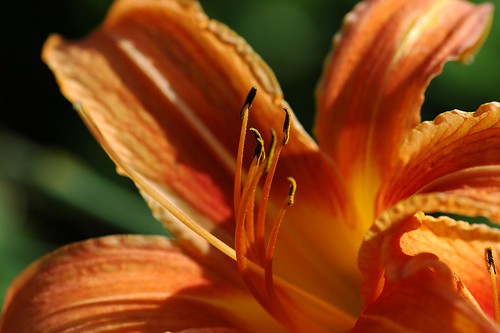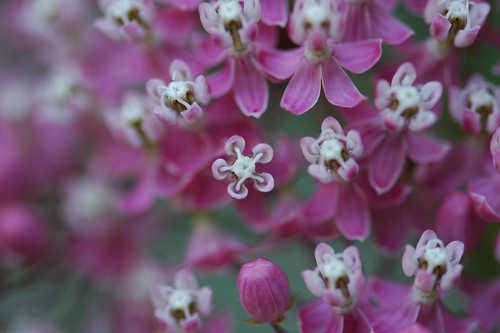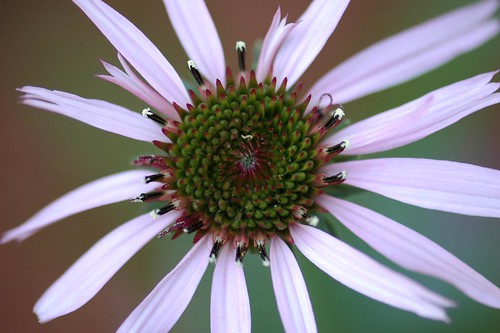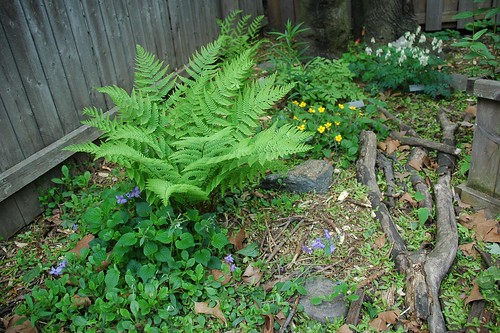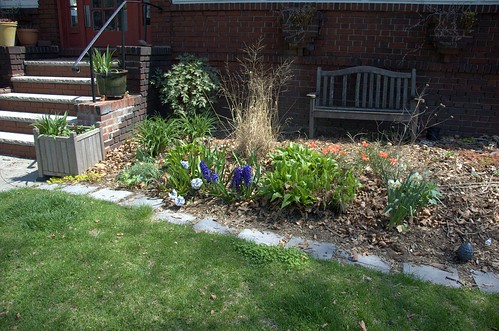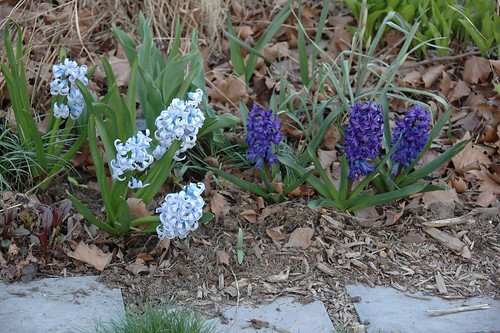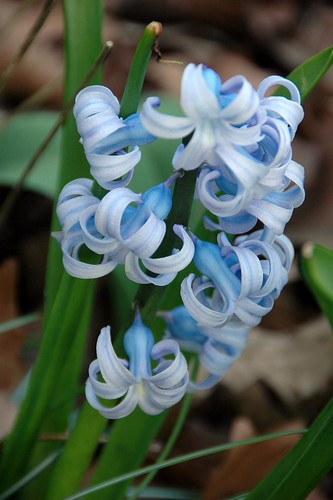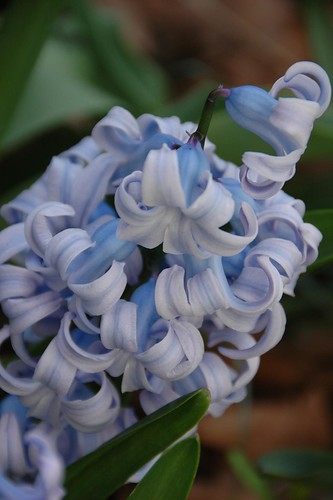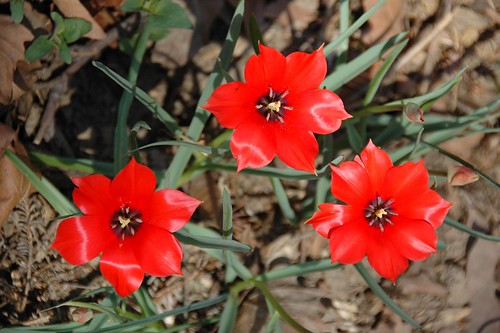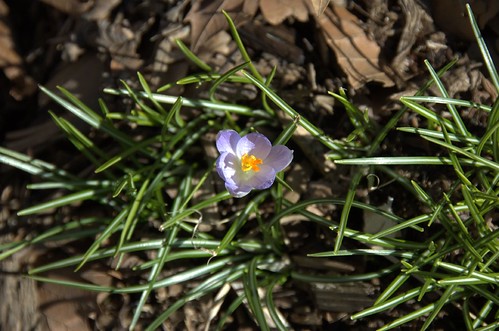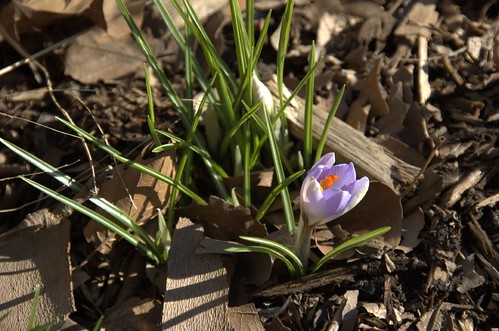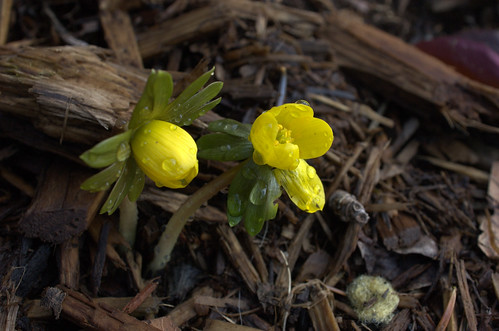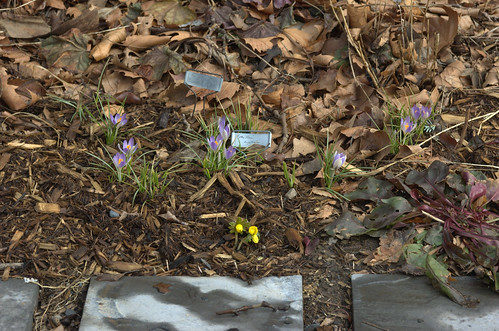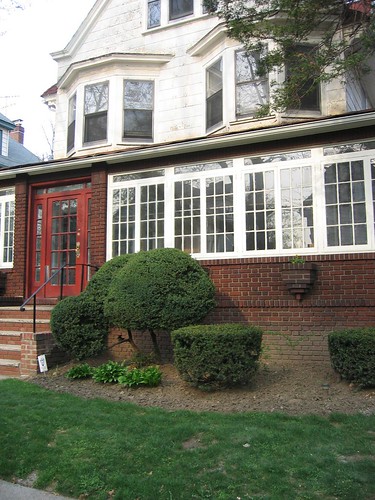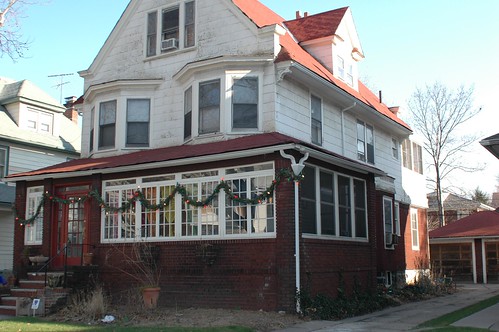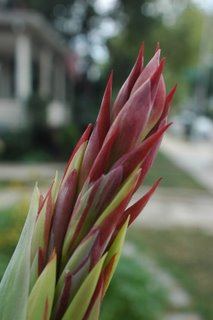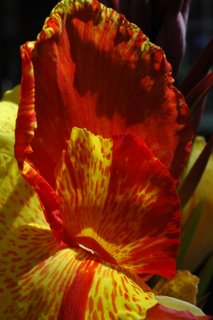My front garden bloomed all the colors of the rainbow just in time for this past Pride Weekend.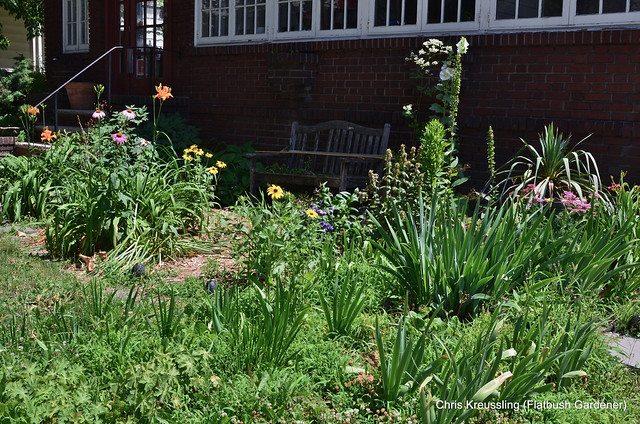
The plants in bloom include natives, heirlooms, passalongs from past plant swaps, and weeds. Not everything in bloom is visible in the photo. Some are too small to stand out at this scale. Others are just off-frame to the right.
- Achillea millefolium, Common Yarrow, cerise/pink-red, passalong
- Campanula trachelium ‘Bernice’, double-flowering Bellflower, purple, purchased
- Commelina communis, Asiatic Dayflower, blue, weed
- Dianthus (I think), pink, passalong
- Echinacea purpurea, Purple Coneflower, purple-pink, native
- Hemerocallis fulva, Daylily, orange, came with the house
- Hemerocallis fulva, double-flowering Daylily, orange, heirloom
- Hemerocallis ‘Pardon Me’, red, purchased
- Oxalis stricta, Upright Wood-Sorrel, yellow, native/weed
- Rudbeckia fulgida, Black-eyed Susan, yellow, native
The white-flowering plants are:
- Alcea rosea, Common Hollyhock, seed strain that came with the house
- Digitalis purpurea, Foxglove, seed strain that came with the house
- Penstemon digitalis, Tall White Beard-tongue, native
- Thalictrum pubescens, Tall Meadow-Rue, native
- Trifolium repens, White Clover
Almost everything in this photo was newly planted this Spring. The only existing plantings are those near the steps. You can see everything is in full sun. It wasn’t so when we bought the house.
Two years ago, Hurricane Irene hit. The mature London Plane Tree in front of our next-door neighbor-to-the-south came down. This changed our shady front yard to one of full sun, and opened up new opportunities for plant choices.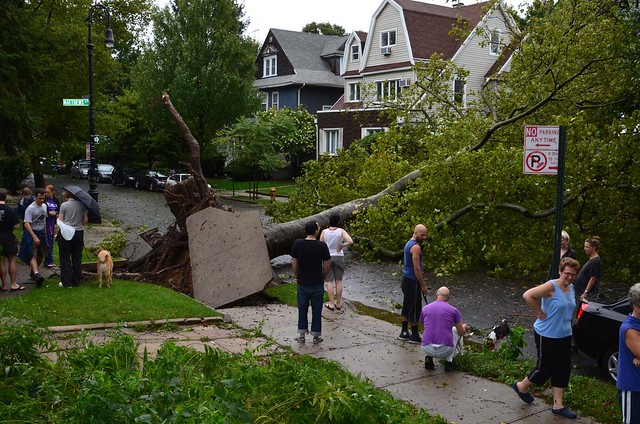
It also allowed me to advance my long-term plan of planting all of the front yard, and eliminating the last vestiges of “lawn” from our property. So this Spring, I planted out the first section, along the driveway. I’ll make my way across the lawn year-by-year. In a few years, the entire front yard will be planted out.
Related Content
Great Flatbush Plant Swap 2013
Hurricane Irene (Flickr photo set)

